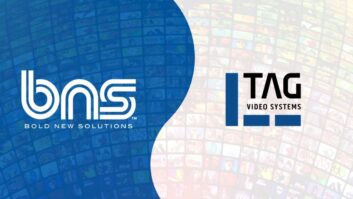
The new Viz Engine changes the idea of what a video server should be, says Petter Ole Jakonsen, CTO, Vizrt
Another year, another new format – or ten! Broadcasters are now surrounded by a sea of formats and it’s an increasing challenge for the industry to handle these when distributing to the many output channels used today. Graphics and branding force us to have multiple versions of the same clip eating up storage space and increasing the need for video management. This isn’t new but a solution is urgently needed to deal with all these new formats.
This is a problem that Vizrt has been addressing for several years. Our mantra has always been to enable a broadcaster to do as much of a live production with as few components as possible. Through this understanding of how an efficient broadcaster should ideally operate, we’ve created a new video, graphics and audio workflow centered on Viz Engine as a powerful video playback system for any format.
This is not some mysterious black-box that engineers will be eyeing sceptically while it resides in their server room. A highly reliable video playout server, Viz Engine functions as a multi-channel playout server for HD and 4K, while also allowing streaming IP video in and out. It allows Vizrt’s world-class graphics and video to be composited in realtime and output in a wide range of content formats. The system is expandable — multiple GPUs can be added for complex graphics and video production. The same system is also J2K and SMPTE 2022 enabled providing solutions in the transition to IP-based infrastructure.
We’ve implemented this system with one of the biggest 24-hour broadcasters in the world. This allows for all ten Viz Engines to simultaneously play many channels of growing files instantly. It can be controlled from any of our applications or integrated third party vendors.
We designed the video capabilities of Viz Engine so that anyone using it — there are tens of thousands in broadcaster’s server rooms right now — can easily upgrade current systems to play back video and graphics simultaneously.
Fully customisable, two Viz Engines today could be running a virtual set, then repurposed tomorrow as a video and graphics playback system. This can also be applied to video walls. Now you’re able to have all the graphics, video clips and live video feeds sourced into the video wall from only Viz Engine.
Another important aspect of Viz Engine is its capability to be used as a live format conversion tool. If you’re broadcasting in 4K and you need to pair down to an IP stream for mobile phones you can send the entire broadcast signal through Viz Engine and the system will convert content in real time to any required format. Combine this with the studio automation capabilities of Viz Mosart or the channel in a box abilities of Viz Opus and broadcasters will be set for the future of broadcasting, no matter what that may be.







